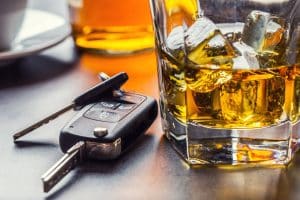Will This Technology Curb Drunk Driving?
 Every year, impaired driving is responsible for tens of thousands of fatalities on US roads. To combat this issue, the National Highway Traffic Safety Administration (NHTSA) has announced plans to require new cars to have technology that can detect and prevent drivers from operating a vehicle while under the influence of alcohol.
Every year, impaired driving is responsible for tens of thousands of fatalities on US roads. To combat this issue, the National Highway Traffic Safety Administration (NHTSA) has announced plans to require new cars to have technology that can detect and prevent drivers from operating a vehicle while under the influence of alcohol.
According to the Insurance Institute for Highway Safety (IIHS), the bipartisan infrastructure law, passed in 2021, contains a congressional mandate for the NHTSA to require every new passenger vehicle to be equipped with a system that prevents an alcohol-impaired driver from operating it. The 2021 infrastructure law aims to prevent impaired-driving deaths, which currently account for 29% of fatalities in road crashes.
A technology being developed by the Driver Alcohol Detection System for Safety (DADSS) project is one potential solution. It uses a breath-based system similar to ignition interlocks, but with a passive approach that does not require the driver to blow into a tube or take any special action. Instead, it analyzes the driver's exhalations from normal breathing and prevents the vehicle from moving if it determines the driver has a blood alcohol concentration (BAC) over 0.08%. Other technologies have also been developed to detect signs of erratic driving, fatigue, or distraction. This mandate, once implemented, will help reduce the more than 10,000 US annual drunk driving related deaths, as reported by the Center for Disease Control and Prevention.
Before issuing a final regulation, the NHTSA must complete several steps. These include researching the breadth of potential technologies, determining tests and criteria to evaluate manufacturer compliance, coming up with a cost estimate for equipping the fleet, publishing a proposed regulation, weighing public opinion and making revisions as needed.
While car safety features have come a long way over the years, this new development changes the focus from minimizing injury after a collision, to stopping the collision from happening. By reducing the number of impaired driving accidents on our roads, anti-impaired driving technology could make for a safer future.
Is drunk driving common in Massachusetts?
In 2021, the Massachusetts Office of Grants and Research Highway Safety Division reported the notable steps that were taken to keep our Boston roads safe. In a summer drunk driving prevention initiative, local police departments made over 20,000 stops based on erratic driving, resulting in over 6,000 citations and 7,683 hours of overtime for police officers.
The Massachusetts State Police also conducted 12 sobriety checkpoints, totaling 4,023 hours of high-visibility enforcement during 2021. These efforts led to 97 arrests for operating under the influence of alcohol. The effort is there and attention from the police is key but there were even more steps outside of direct enforcement.
What does it take to keep Boston streets safe today?
In our current landscape, messaging is key. Media campaigns were also launched to support the drunk driving prevention efforts during the summer of 2021, with television spots promoting sober and attentive driving, seat belt usage and adherence to speed limits. These campaigns generated impressive results, reaching 32.7 million viewers. While we have made significant strides in reducing impaired driving fatalities through various programs and initiatives, there are new technologies that will make our roads much safer.
Will enhanced driver monitoring systems make Boston roads safer?
In short, yes and it already is. With the increasing prevalence of driver safety technology in vehicles, such as lane-keep detection, forward collision assistance and intelligent cruise control, it is evident that car manufacturers are prioritizing the development of advanced features. These technologies aim to prevent accidents by keeping vehicles within their lanes, detecting and stopping forward collisions and maintaining a safe distance from the car ahead.
In line with this trend, the Insurance Institute for Highway Safety (IIHS) is now urging manufacturers to go a step further and enhance driver monitoring technology. The objective is to ensure that all new cars are equipped with systems that can monitor driver behavior on the road and issue warnings if the driver becomes erratic or distracted. In more severe cases, the technology should even have the capability to bring the vehicle to a stop if the driver consistently ignores these alerts.
By expanding driver monitoring capabilities, the IIHS and car manufacturers hope to promote safer driving practices and reduce the likelihood of accidents caused by driver negligence.
However, there may be opposition to the law from individuals or groups with trepidation to overly automated technology, it is up to manufacturers and lawmakers to ease these people's concerns. To address this, effective communication and engagement strategies must be employed. Public consultations and widespread information campaigns can help ensure that the public understands the purpose and benefits of the law and address any concerns or misunderstandings they may have.
Additionally, the government and other relevant institutions must demonstrate their commitment to implementing the law in a fair, transparent and accountable manner. By maintaining public support, it will be easier to overcome any challenges or obstacles that may arise during the implementation process and achieve the law's intended goals for the benefit of society.
While we wait for this next generation of safety to reach our Boston roadways we still need to be cautious on the road. If you or a loved one is a victim of a car accident, promptly seek medical attention, even if post crash symptoms are mild. Next, reach out to the experienced personal injury attorneys at Breakstone, White & Gluck. Our track record of providing justice to our clients is well documented in our testimonials. We are ready to fight for your rights and help you regain peace of mind after your accident. Contact us today for your free consultation.
